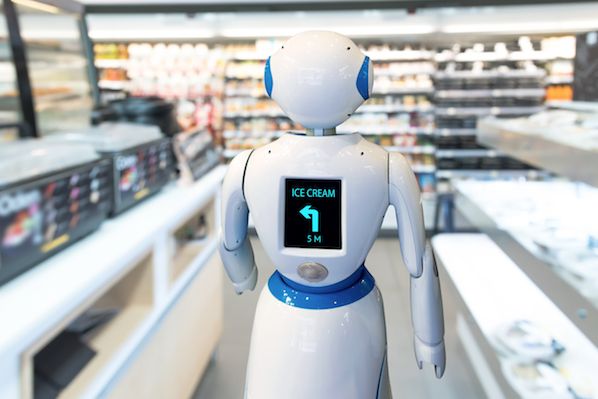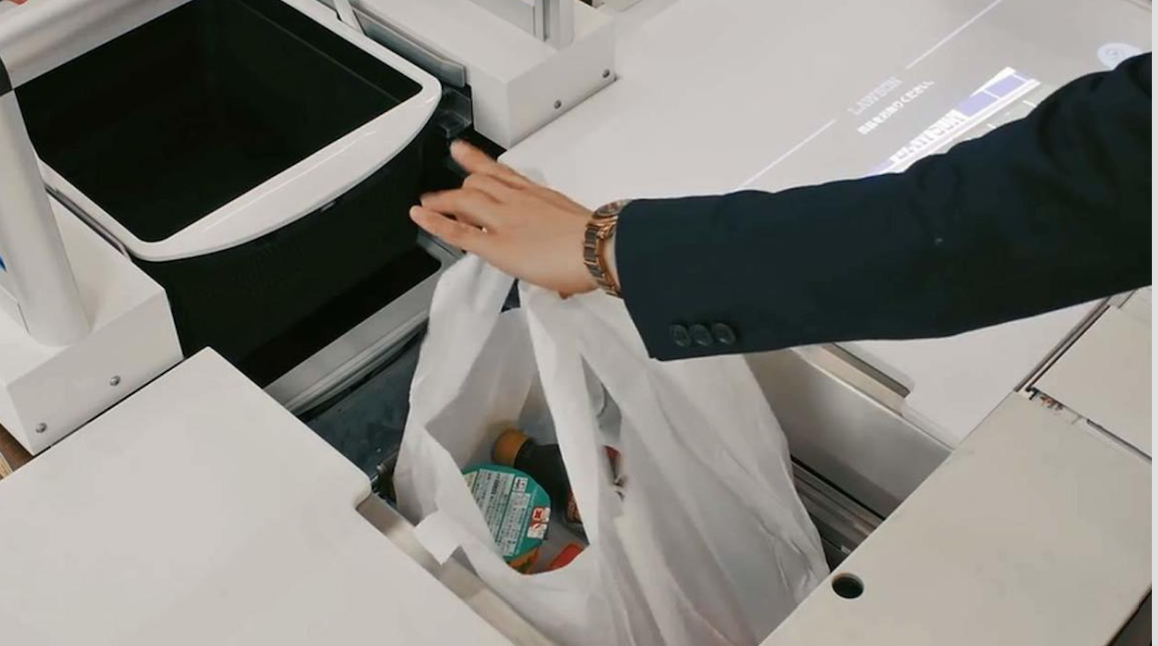As IoT is becoming a key component in the retail world, the list of exciting innovations is becoming longer. Thanks to technology, retailers are, step-by-step, turning the ‘smart stores’ into realization, providing its shoppers with a real-time, enhanced experience.
Today, shoppers expect an efficient, fast and personalized experience, and many retailers are turning to technology for a solution. How will the future of the store look like? What will be the role of shoppers and how will focus on experience shape the way we shop? These are some questions we ask ourselves along the way.

Two innovations that have particular potential in changing the retail industry are smart shelves and robotic checkout. With their ability to create an engaging experience while solving shopper frustrations, these new technologies could greatly improve the shopping service. Although the two are still being developed, let’s explore deeper the components of the smart store:
Smart Shelves
Today’s shelves do not play an active role within the selling process and smart shelves might just about to change that. Even if smart shelves might not at first sound like the game-changer, their features differentiate them from the rest of novelties in a few ways. With a rise in privacy concerns among many shoppers and their reluctance to give away data just to be targeted with ineffective ads, smart shelves have the potential of achieving personalization in a much more subtle way. As they measure consumer’s interest in a specific item based on their touch, they do not require direct involvement but still offer detailed information about the products.
Smart shelves connect with the consumer on a different level
Thanks to their sensors, smart shelves can recognize which products sell the best, the least, and which ones have trouble converting into a purchase. This feature gives retailers a whole new pool of information that does not require any effort from the side of the consumer.
The shelves do not only respond to touch, but they also interact with the customer in an additional way - an app on their smartphone. Once the customer approaches the shelf, they can see personal recommendations and old purchases popping up. If customers have built shopping lists on their app, smart shelves will recognize it and show where the items are located.
Smart shelves help improve merchandise assortment
As the innovative shelves collect data on how many times customers touch an item vs how many sales occur, this provides retailers with invaluable insights and helps them optimize the store assortment. Since items on the shelves are marked with RFID tags, this can help retailers manage and track inventory and alert staff if shelves are empty, need restocking, or items are being misplaced.
Depending on the complexity of shelves, some might provide detailed information about the product and have electronic labels that make it easier to adjust the price in the store. Just imagine entering your favorite jeans store, and being shown information ranging from the materials it is made from, onto its origin and usage instructions. That could indeed create a personal experience and make you feel much more connected to the brand!
But how does this work? Smart shelves combine RFID tags, IoT sensors, and wireless communication to bring a richer in-store experience. They have built-in IoT sensors that help monitor how items are handled. The wireless systems use RFID tags and readers or IoT sensors to monitor products and communicate with the server, linking data back to the store’s EPOS system.

Many challenges to overcome
At first glance, this innovation is a real turning point, but there are still several challenges that need to be dealt with. Among others, retailers will need to rethink the purpose of shelves that focus either on shopper experience, data gathering, or both. Exposed to a huge amount of data, they will need to collect relevant data in a cost-efficient and secure manner. Moreover, retailers will need to determine their data ownership strategy concerning the shopper’s desire for privacy. Finally, they will need to unify their customer’s data from both online and offline sources.
Robotic Checkout Systems

The frustration that comes with checkouts is an issue retailers have been struggling with for a long time. In the last few years, many attempts to redesign the way we pay for purchased goods have been made. Self-checkouts in grocery stores have largely shortened the waiting queues and self-checkouts in retail are also becoming more popular. Fast-fashion retailer Zara, for example, installed self-checkouts to shorten the queues and solve the crowd issues. While we are still adapting to this innovation, a new novelty, the robotic checkout system, has impatiently been lurking around the corner.
This automated system functions as follows: the shopper selects items that are all marked with RFID tags and puts them in a smart basket. Once at the checkout, the shopper puts the basket in a dedicated checkout counter, where the system automatically settles the transaction and places the purchased products in a bag. As RFID tags are used instead of barcodes, this eliminates the need for product scanning. Panasonic was one of the first to test this innovation:
Through the speedier checkout system requires no scanning, retailers can enhance the shopping experience while saving time for both staff and shoppers. However, before this innovation takes its toll, many steps still need to be done: items must be marked with RFID tags and a costs must be reduced, as this technology still comes with big expenses.
Although we already see many tech-savvy stores, smart stores still have a way to go. Humans take some time to adapt to change and the shift to smart stores is more likely to be a long process, rather than an overnight shift. With that in mind, retailers must be cautious not to overstimulate their shoppers, but rather to incorporate the new components naturally.
Still, innovations as smart shelves and robotic checkouts make us excited about the future of the stores. They have the potential to reduce frustrations as waiting queues, lack of product information, or incorrect pricing. Revolutionizing the way stores are designed, they are leveraging our experience and surely setting the path to smart stores.
Are you curious to learn more? Through our integrated decision-making platform at StoreDNA, we help you deliver dramatically improved performance through better product assortments, store layouts, visual merchandising, and associate optimization. Learn more here.